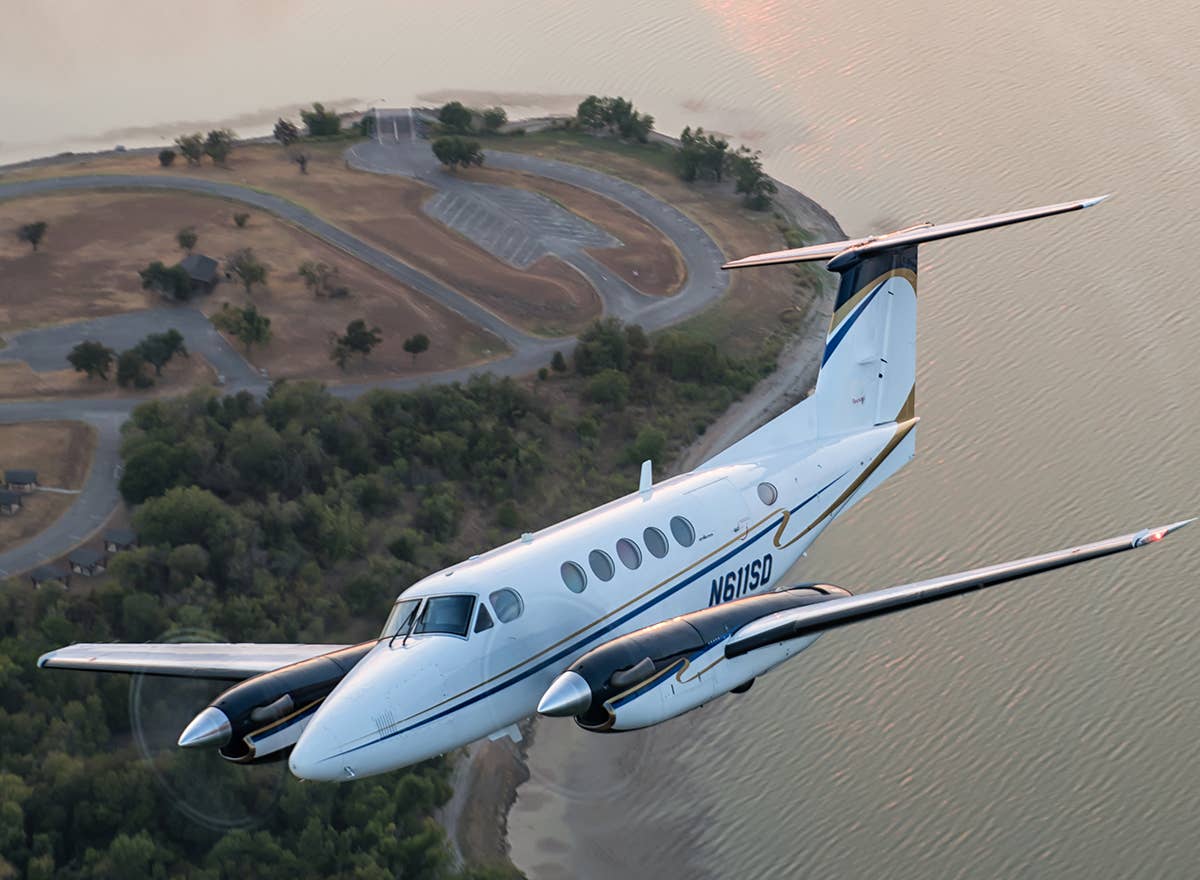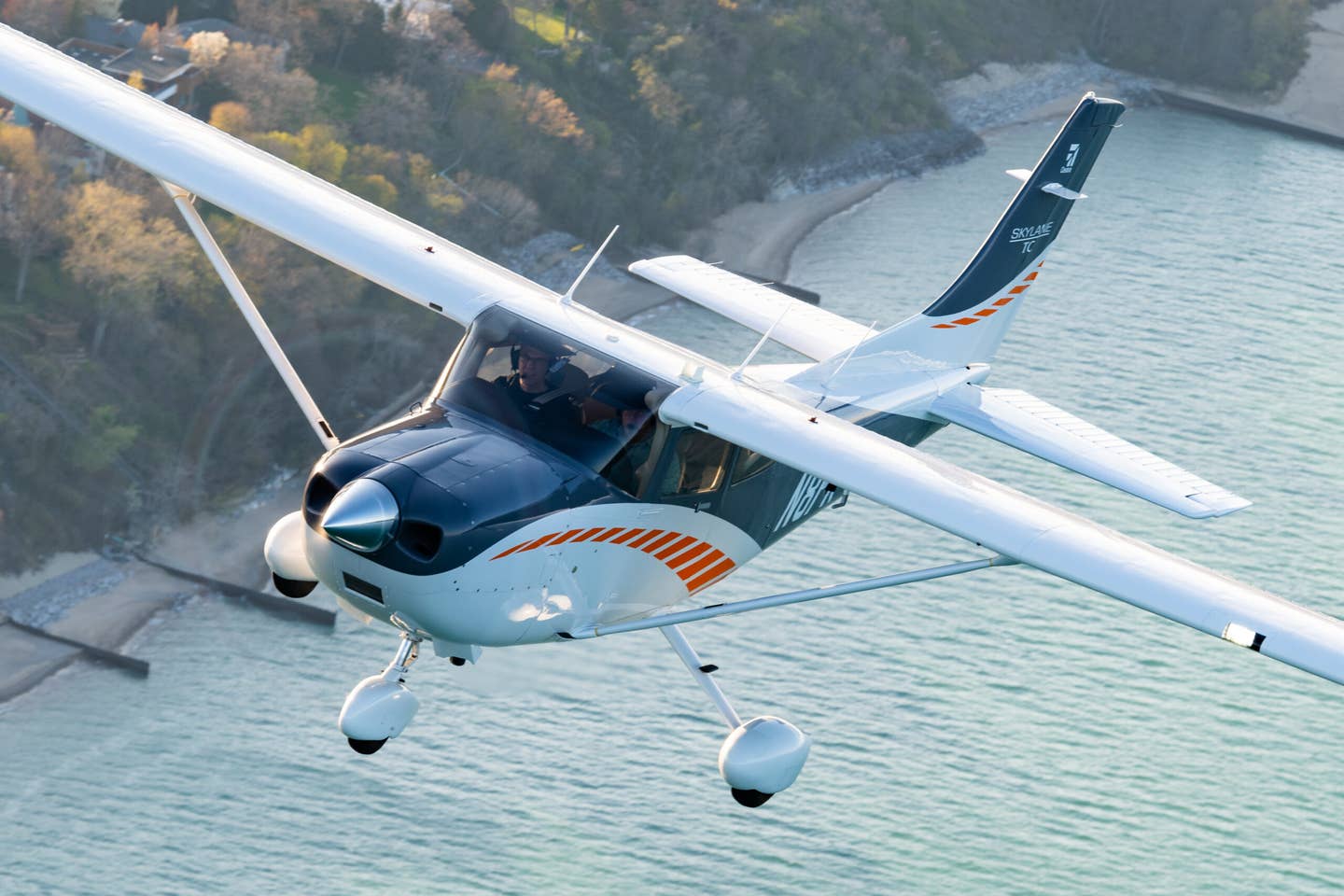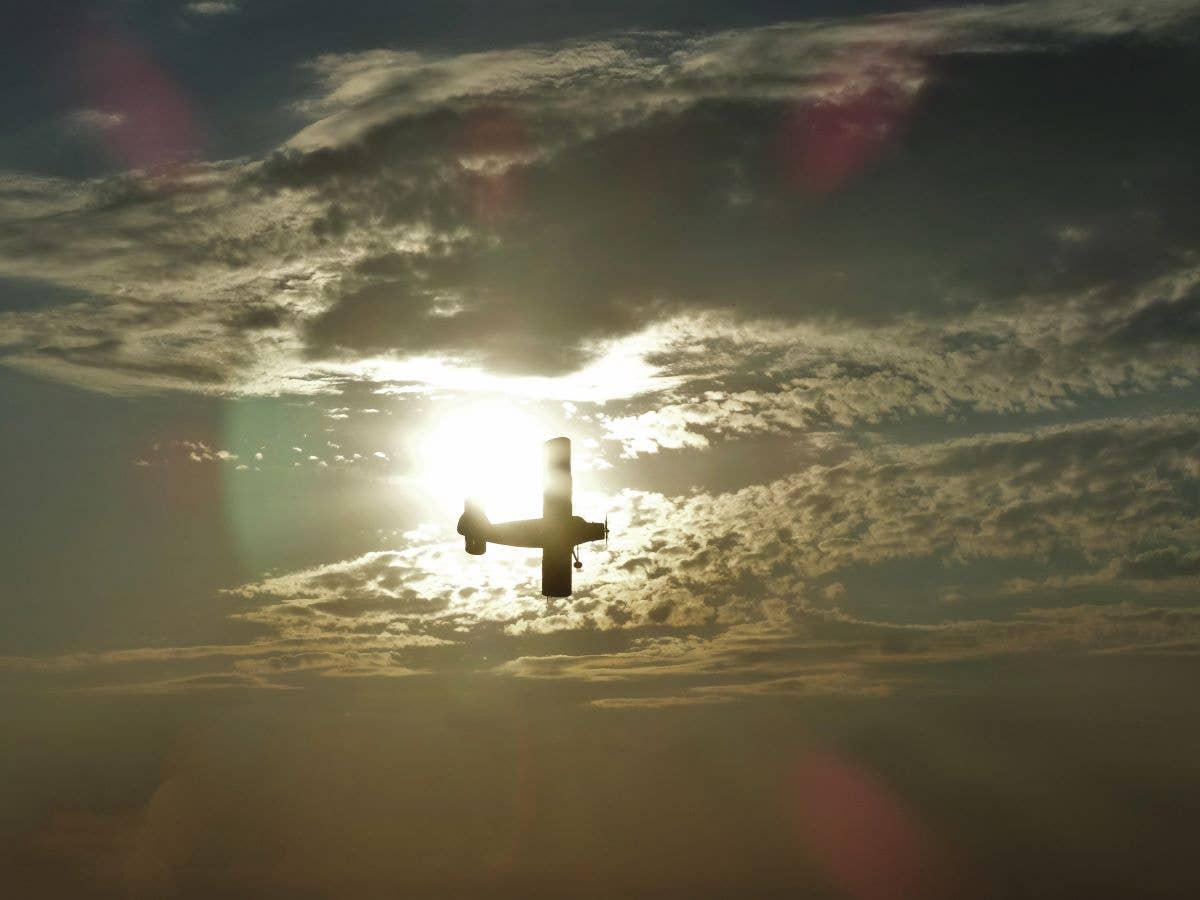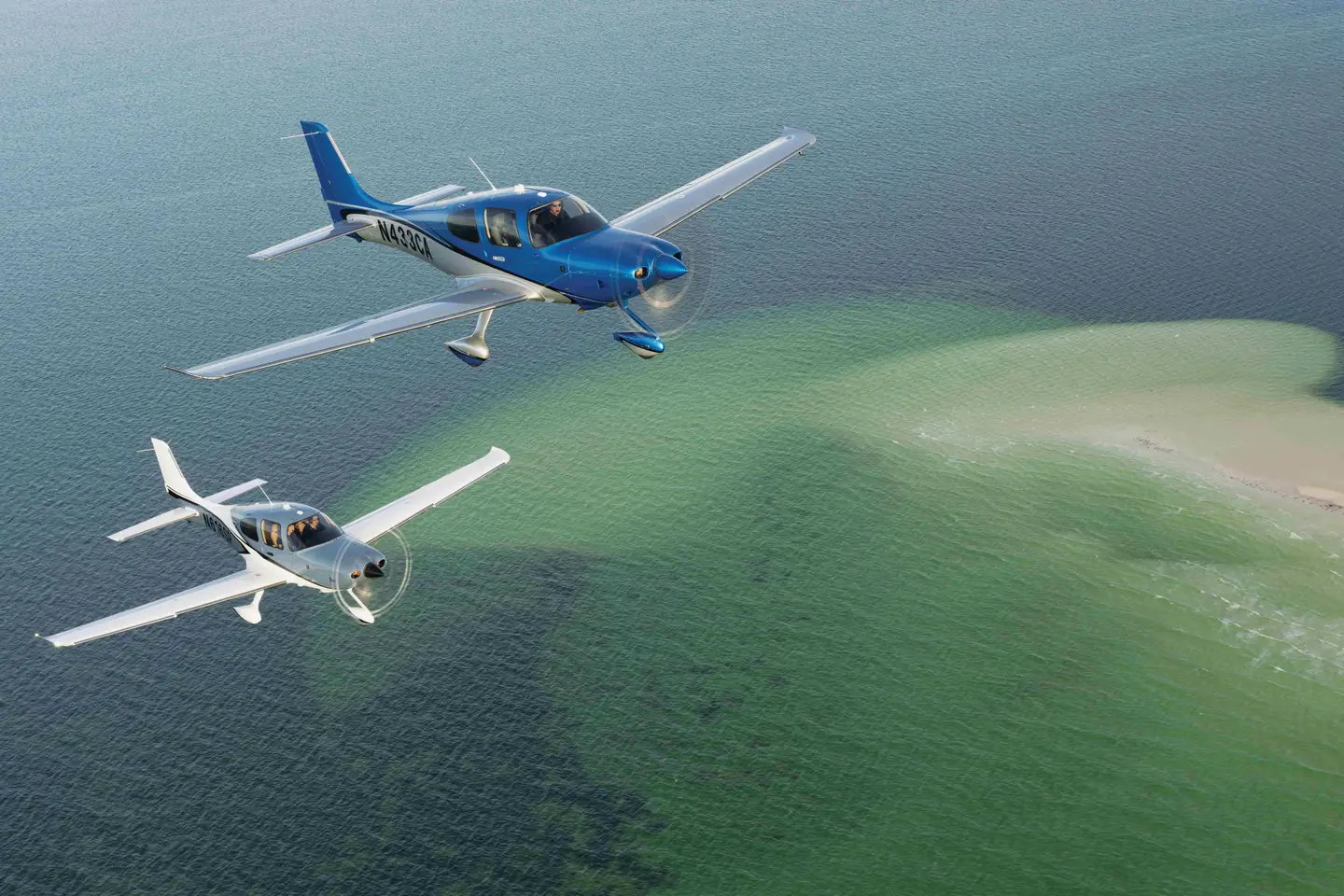We Fly: Garmin Autoland for the Beechcraft King Air 200
A new level of support for single-pilot ops in the twin turboprop.

Following Autoland’s debut in the Piper M600, Garmin pursued an STC in a fleet leader, the King Air 200. [Photo: Glenn Watson]
When it comes to the capability of an airplane to “land itself,” we shouldn’t ask why it can now—but rather why that it didn’t come to general aviation a lot sooner.
The technology has been around since before World War II in military airplanes (see “How Can It Land Itself?” below) and from the mid-1960s in transport category jets. But if necessity is the mother of invention, then market demand is its directional guidance. When Garmin Aviation unveiled its Autoland emergency landing system in 2019, we saw the intersection of relatively inexpensive and precise GPS navigation, digital autopilots, and the FADEC-enabled turbine and turboprop powerplants capable of responding elegantly to an autothrottle.
Garmin debuted Autoland in the Piper M600/SLS—with an emergency-only autothrottle at first. Daher was first to certify a standalone Garmin autothrottle, in the TBM 940, followed by Cirrus in the SF50 Vision Jet, then the two OEMs added Autoland functionality in sequence in 2020. For the safety breakthrough, Garmin secured the Robert J. Collier Trophy—and FLYING’s 2021 Innovation Award.
In the case of Garmin’s Autoland, the fact that someone has yet to push the big red button spells a certain success. Or does it? Have you read of an accident in which the aircraft’s ability to land itself might have saved the day? And would you use the system if the situation warranted?
If you're not already a subscriber, what are you waiting for? Subscribe today to get the issue as soon as it is released in either Print or Digital formats.
Subscribe NowThe Next Versions of Autoland
No one seems to mind that we haven’t seen Autoland used in anger yet. The applications just keep coming. Adding to new certs in the TBM 960 and Daher retrofits, the recently announced HondaJet Elite II program on its model HA-420, and the inclusion of the system on the upcoming Beechcraft Denali single-engine turboprop, Garmin has been working on its own supplemental type certificate for the Beechcraft King Air 200, to be followed by the 300 series—on an up-to-50-year-old design with many configurations.
For the King Air 200 series STC, you need a 200/B200 model—and several key components, including the Pratt & Whitney PT6A-42, -52, or -61 engines paired with four-blade props. Your King Air also requires hydraulic landing gear for Autoland. You’ll need the latest configuration Garmin G1000 NXi flight deck for either autothrottle alone or paired with Autoland. You can start with an analog panel or the basic G1000—you just have to get the updated NXi first.
Four years ago, I had a sneak peek of the very first installation at Olathe, Kansas, at New Century AirCenter (KIXD). On August 19, I climbed on board with Eric Sargent, engineer and flight-test pilot, into N60HL, which Piper had delegated to the project just a day before the company had to take it out of market survey for the final push to certification. I didn’t know what to expect—and we flew a slightly modified version of the protocol since the whole project remained under a cloak of secrecy at the time.
Still, I had to draw upon all my years of sitting there in the right seat watching students work out how to land without my touching the yoke, in order to keep my hands from grabbing for the horns as the M600 made a competent—if a bit solid—touchdown.
Going Flying—Hands Off
During that initial dance with Autoland, Jessica Koss, then aviation media relations specialist and now demo pilot for Garmin, led my introduction to the project. So it was only fitting that she would take the left seat in the King Air for the next demo I’d have—this time out of the Appleton Regional Airport (KATW) in Wisconsin during the week of EAA AirVenture in late July. Garmin announced the STC in progress the week prior, so our moves weren’t top secret this time, but it still felt like we would tap into talents on board the twin turboprop that the bigger iron we taxied past—a Falcon 900, a Citation Latitude—could only dream of having in the panel. With two rated pilots up front, midsize to long-range business jets don’t need “George the autopilot” to do any more than it already does, perhaps. But the King Air—so often flown single pilot—does.
This King Air B200—N288KM, Garmin’s workhorse test bed for new toys—had two critical building blocks installed to make the Autoland system work. First, it needed the upgrade to the G1000 NXi, the integrated flight deck now available by STC or as original OEM equipment in a multitude of light singles and twins. That STC for the King Air 200 series debuted in 2011—and across the King Air C90, 200/B200 and 300/350 series, Garmin estimates roughly 841 aircraft have had the STC installed, with 562 already equipped with the upgraded G1000 NXi.
Second, the King Air needed an autothrottle. While another autothrottle option exists for the model—the Innovative Solutions & Support installation, which debuted in 2019 and won FLYING’s Editors Choice Award that year—the Autoland suite requires the Garmin solution. That didn’t exist until recently, and it’s part of the package Garmin introduced at AirVenture. We would get to test both the autothrottle in its stand-alone modes and Autoland with the AT pulling the power levers, literally.
Before we launched, we’d had a briefing on the suite and the procedures. Around the table at the Appleton Flight Center—a hive aswarm with pilots to-ing and fro-ing during the show—Koss, Will Johnson (flight-test engineer), Aaron Newman (flight-test pilot), and Scott Frye (program manager) walked us through the architecture of the system and what to expect.
About That Autothrottle
We followed the plan to go through a takeoff using the autothrottle and climb above the bumps around 5,500 feet msl. The autothrottle itself brings significant safety benefits through its series of modes paired with the phase of flight. One key “pilot surprise” it prevents is throttle rollback when engaged—which has been blamed for several accidents over the course of the twin’s history. It also provides torque adjustment in the case of an over-temperature or overtorque condition.
Takeoff, climb, and descent/approach modes have standard settings or can be user-configurable.
But the phase of flight where the AT shines is if you lose power on one side. Then, it kicks into OEI (one-engine inoperative) mode and supports the pilot, working in parallel with the King Air’s native rudder boost. Autothrottle OEI is separate from rudder boost-triggered OEI ESP, and it is functionally equivalent to normal AT, except it parks the failed side throttle lever in its present position once the failure is detected.
About 20 nm out from KATW, Koss called Appleton Tower and by their prearranged agreement announced the request to initiate the Autoland sequence. As expected, the tower was able to accommodate the demo and told us to expect Runway 21. With the way clear, Koss had me engage the guarded, red-rimmed “Emergency Autoland” button—found in the King Air application on the lower console between the pilot and copilot seats. That keeps it within reach of both cockpit denizens but also the folks in the back.
From there on, Autoland took the reins, and frankly, it got pretty boring—if not still a bit surreal to watch the airplane fly itself. Keep in mind the King Air weighs almost twice as much as any other certificated application thus far—so much needed to be accounted for in the landing portion in terms of ensuring the stabilization of that mass prior to touchdown.
The screens turned to “calm-the-passengers” mode, and a series of gentle maneuvers linked us to the final approach course and a solid touchdown. I joked with Koss that she could surely land better than that—and it’s true. Autoland is not set up to caress the runway with the grace of a skilled—or lucky—pilot. It’s set to land firmly but safely, as if the runway were always slicked with a quarter-inch of rain.
A. The G1000 NXi installation comes first, bringing the latest software into the flight deck if not already installed.
B. The autothrottle utilizes mechanical linkages as well as electrical components to set power for the phase of flight—or balance power between the engines.
C. Sensors and autopilot servos work behind the scenes to monitor flap and gear positions, and move flight control surfaces in response to Autoland requirements.
D. Garmin’s electronic stability and protection enters a new protocol during engine-out operations.
E. Autoland changes the displays to a passenger-centric presentation that walks the people on board through the steps of the approach and onto the landing.
How it Works
For those who didn’t read FLYING’s complete report in the January/February 2020 issue, or you want a review of what’s going on behind the scenes, here you go. The pieces of Autoland in the King Air B200 emulate those of the original installation—with a few more moving parts (and algorithms inside) to attend to the fact this is a turboprop twin we’re working with and not a single-engine turboprop or jet. In fact, the STC will mark the first certification of a two-engined aircraft, with the initial approval in the twin-engined HondaJet still in the works at press time.
First, there’s Garmin’s electronic stability and protection (ESP). The advanced aircraft recovery functionality has been built into Garmin flight decks since 2010. ESP works in the background when the pilot hand-flies the airplane. It’s independent of the autopilot but is activated using the AP’s servos. If the pilot exceeds a 45-degree bank, and ESP is active, then it will engage and nudge the flight controls to a more level attitude—and encourage the pilot to reduce the bank angle a bit. It works in a similar way with nose-up and nose-down pitch attitudes. If ESP activates for a prolonged period, the autopilot will engage in level mode.
The ESP takes on a new level in OEI management—what old school called “engine-out ops” or “single-engine ops.” Normally, the loss of power on one side triggers a bank excursion unless the pilot captures the change with appropriate rudder and aileron input—remember “dead foot, dead engine” and banking 5 degrees into the good powerplant? Well, upon the power loss, the ESP’s normal limits of 45 degrees change to 10 degrees into the failed engine and 40 degrees into the good engine, and pitch limits tighten from 20 degrees to 10 degrees pitch up and from 17 degrees to just 5 degrees nose down. Low airspeed protection kicks in at VMCA plus 15 kias.
Second, there’s emergency descent management (EDM). EDM monitors pressurization and, in the event of a pressurization loss, maneuvers the airplane down to 15,000 feet msl or lower, unless the pilot responds.
Third, the autothrottle kicks in. The AT controls power typically by maintaining an airspeed, or a climb or descent rate, as selected by the pilot through the autopilot. In the case of Autoland, the AT continues to manage power during the descent, approach, and landing, based on target speeds, altitudes, and climb or descent rates, as called for by the system. For the King Air application, the autothrottle also balances power between the left and right engines, and monitors both to respond in the event of a power loss.
Fourth, sensors and “smart” autopilot servos work in the background. A barrage of specialized sensors monitor flap and gear positions, as well as braking sensors once the airplane is on the runway. The autopilot also features advanced servos with the functionality to be driven in very fine increments. This allows them to manage the precise vertical/descent rate and touchdown protocol required for a reasonably smooth landing.
Finally, there is a radar altimeter, already installed on the King Air. This advanced altimetry system uses the timing of radio waves to determine the airplane’s height above the ground with pinpoint accuracy. Initial testing of Autoland on previous singles attempted to manage altitude just by reference to the GPS—but the nuances of the roundout managing final feet above the runway required the precision of a radar altimeter to execute the landing properly. Perhaps future iterations of Autoland could use increasingly precise GPS for this component, but we’re not there yet.
So, back to the question posed as we sit here four years into a real, fielded automatic landing system for GA. We probably still need more time flying with the system ready in the background before we’ve contemplated all the ways it might save the day. And future versions are likely to assist us in abnormal situations rather than emergency ones—like using it to fly the airplane (without the ATC warnings) while we care for a sick passenger or upon entering weather we’re not prepared to exit properly.
One thing is for certain: Like a parachute, it’s a tool which, well deployed, can expand our reach as pilots—safely.
What’s it Going to Cost You?
Autothrottle: Starting at $44,995 (plus installation)
Autoland (assuming the G1000 NXi and autothrottle installed): Starting at $32,995 (plus installation)
Upgrading G1000 NXi to Phase II (to support AL/AT): $74,995 when purchased with the AT package
Upgrading the G1000 to the G1000 NXi: $52,995 (plus installation)
Adding G1000 NXi from scratch: $410,000 to $450,000 (depending on facility and options)
Labor estimates:
Autothrottle: 80 to 100 hours
Autoland: 200 to 240 hours
How Can it Land Itself?
With all the tech on the flight deck today, it’s no wonder that a modern airplane can perform a middling-to-decent landing on its own. But if asked when the first automated landing took place, you might be surprised to hear it: August 23, 1937.
That’s when Army Captain Carl Cranetested out his invention—an automatic landing system constructed of airborne receivers installed in a Fokker C-14B paired with a network of five radio beacons surrounding Patterson Field (now KFFO) near Dayton, Ohio.
Crane, director of the Instrument and Navigation Laboratory, and his fellow engineers put their minds to the proposal in 1935. First, in determining the system’s architecture, the group tested the electrical and mechanical components on aircraft in flight—much like a modern autopilot in cruise at first then through approach and landing. From a report filed following the successful attempt and reproduced on Fokker’s website, the process followed a similar structure to modern automatic landings:
First, a Sperry gyro pilot maintained the airplane’s directional control—which had been proven in long-distance flights from Ohio to Texas, New York, and Virginia. Regardless of the airplane’s actual heading when the pilot let go of the controls, the system captured a radio beacon signal from those transmitters that functioned much like marker beacons on an modern ILS.
Using the sensitive altimeter to fix the proper altitude, the airplane tracked inbound to the first of the string of stations, growing ever closer to the field.
For the first complete landing, Crane and engineers George Holloman and Raymond Stout took off from Wright Field (which was KDWF, near Riverside, Ohio, and now closed). As they leveled off and turned on the equipment, the Fokker traversed the roughly 5 sm over to the Patterson landing site.
The Fokker maintained altitude through a throttle “engine”—a rudimentary autothrottle interconnected with the altitude control to adjust the power setting if the minimum altitude was reached prior to Radio Station 1—the closest one to the field. After station passage, the throttle actuated again to set up a power-on glide and descent at a moderate rate until the touchdown was made at Patterson Field. At that point, switches on the landing gear actuated the throttle again, reducing power to idle. The landings were made in winds up to 11 mph and about half in “rough air.”
The C14B had certain advantages in making these trials a success. With a wingspan of 59 feet and a 525 hp Pratt & Whitney R-1690-5 Hornet radial engine, the C14B was relatively powerful when loaded to only half its normal payload—normal max gross weight was 7,341 pounds. Yet it was slow, stable, and ponderous enough in its handling to presume it would land predictably as well, mitigating tendencies to ground loop—which the report excerpt makes no note of, by the way.
Postwar Commercial Autoland
Development on an automatic landing system resumed following World War II, as the Royal Air Force formed its Blind Landing Experimental Unit (BLEU) at two military airfields in Suffolk, England—RAF Martlesham Heath and RAF Woodbridge. Using an increasingly more sophisticated autopilot to track the newly launched ILS for course and vertical guidance, rather than the beacons alone, introduced far more precision into the process. However, though the ILS’ lateral guidance could be used throughout the landing because of the way the transmitter is set up and emits, glideslope guidance ends once the airplane is over the runway threshold, leaving that last 10 feet up in the air, so to speak. Therefore, any autoland system had to begin ignoring the glideslope information once it became unreliable and transition to the radio altimeter.
From this basic truth comes the basis for the Category I instrument approach having a standard minimum altitude of 200 feet agl. Further reductions in those minimums, down to a full “zero-zero” landing, is classified as Category IIIc and requires not only the special onboard equipment and aircraft certification but also pilot training and qualification, and runway certification.
These early systems were tested on the military Vickers Varsity and Avro Vulcan, followed by the first installations on civilian aircraft, the Hawker Siddeley (originally de Havilland) HS.121 Trident, in cooperation with British European Airways. BEA had partnered with the RAF throughout the post-WWII development and made the first automatic landing in commercial revenue service on June 10, 1965, on G-ARPR, from Paris-Le Bourget (LFPB) to London Heathrow (EGLL). From there, the system was installed in the Sud Aviation Caravelle and throughout the turbojet fleets of other airlines.
The U.K. remained pioneers of sorts in utilizing automatic landing systems—driven by the poor weather and persistent low visibility experienced in the British Isles. North American airlines were relatively slow to pick up the new technology. In fact, when BEA went to scrap its Tridents and replace them with the Boeing 757, it was horrified to discover the 757 had no provision for the automatic landing system. While a dozen runways in the U.K. were certified to Cat. IIIc approaches then, only two were in the U.S., and the automatic landing system was deemed unnecessary for operations.
This feature first appeared in the October 2023/Issue 942 of FLYING’s print edition.

Subscribe to Our Newsletter
Get the latest FLYING stories delivered directly to your inbox







